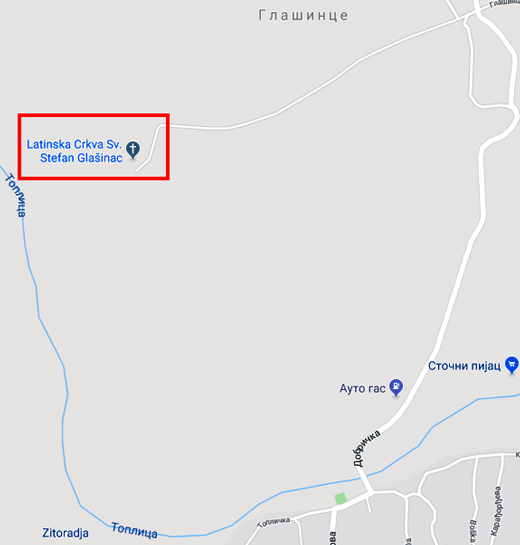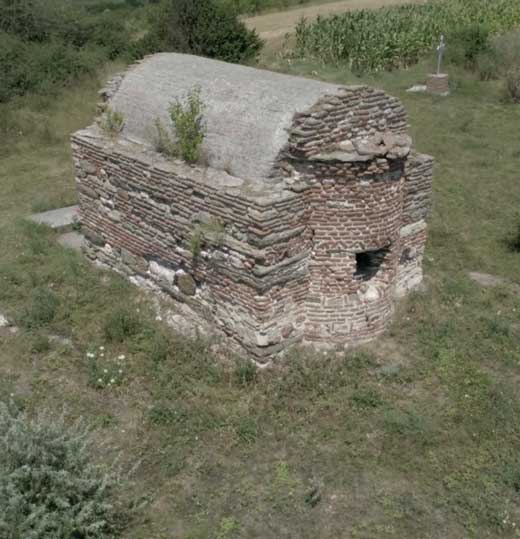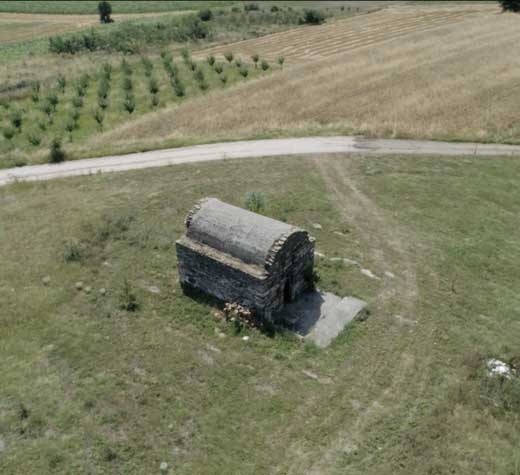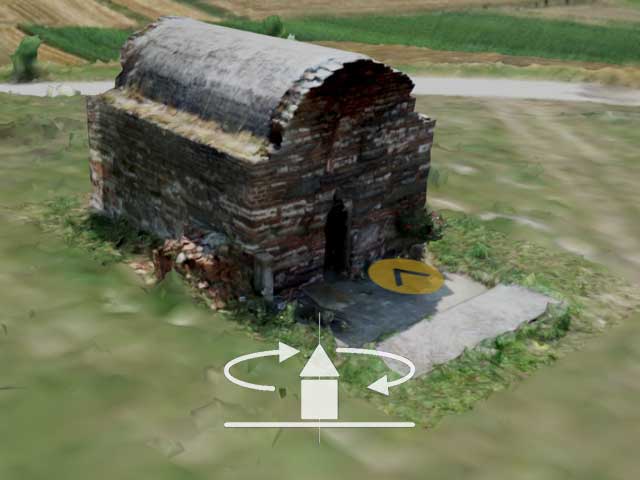LATIN CHURCH
Protected cultural monument, listed as SK 221 with the Republic Institute for the protection of monuments of cultural heritage.
LATIN CHURCHGlasinac, Zitoradja
Location
Latin Church in the village of Glasinac is located on an ellevation called Glacinac hill northwest from the village, northeast from the remains of ancient fortification called Ad Herculem, a significant station on the ancient road leading from Nis towards Ljes on the Adriatic coast.

Istraživanja
The church was never archaeologically researched. During the reconnaissance of the terrain in 1935, Adam Oršić Slavetić noted a church with the remains of fresco decoration and dated it in the Middle Ages. Today the signs of frescoes are almost completely gone, they can only be distinguished in the niche of the proscomidia.

Description
Latin church is a small, single-nave edifice of a rectangular basis with a semi-circular apse in the east. The church was built with bricks and stone from a previously derelict ancient fortification, in highly irregular lines. The apse was built with bricks only, and in the middle, horizontally, a wreath was made from slanted bricks, forming a decorative element. Under the apse roof, the bricks form a jagged wreath. It is covered with semi-arched vault and then with a gabled roof.
On the west wall, above the entrance, there is a semicircular vaulted niche that used to hold a fresco of the saint to whom the church was dedicated (St. Stephan, celebrated on the third day after Christmas). In the altar space there was a preserved altar-table that had a smaller cross inside a circle engraved on the west side. A piece of an ancient column was used as a pedestal of the altar table, probably originating from one of the edifices of ancient fortification. On one of the secondarily used bricks on the south side of the pedestal of the altar-table, there was a plan of ancient Roman fortification presented in relief. The remains of an early medieval necropolis are located north from the church.
Folk tradition
People believe that the chrurch was built by a certain Luka who was taken to become janissary as a small child. Upon his return to the village, as a young man, when he showed himself to his mother, she passed away from happiness. In her memory, Luka built a church. The lore says that Luka remembered where he came from and always protected the villagers.
It is also believed that the church has healing properties, helping sick children. That is why the villagers built an opening in the apse, pushing the children through it, should the church help them heal.

Julka Kuzmanović Cvetkovićarcheologist
